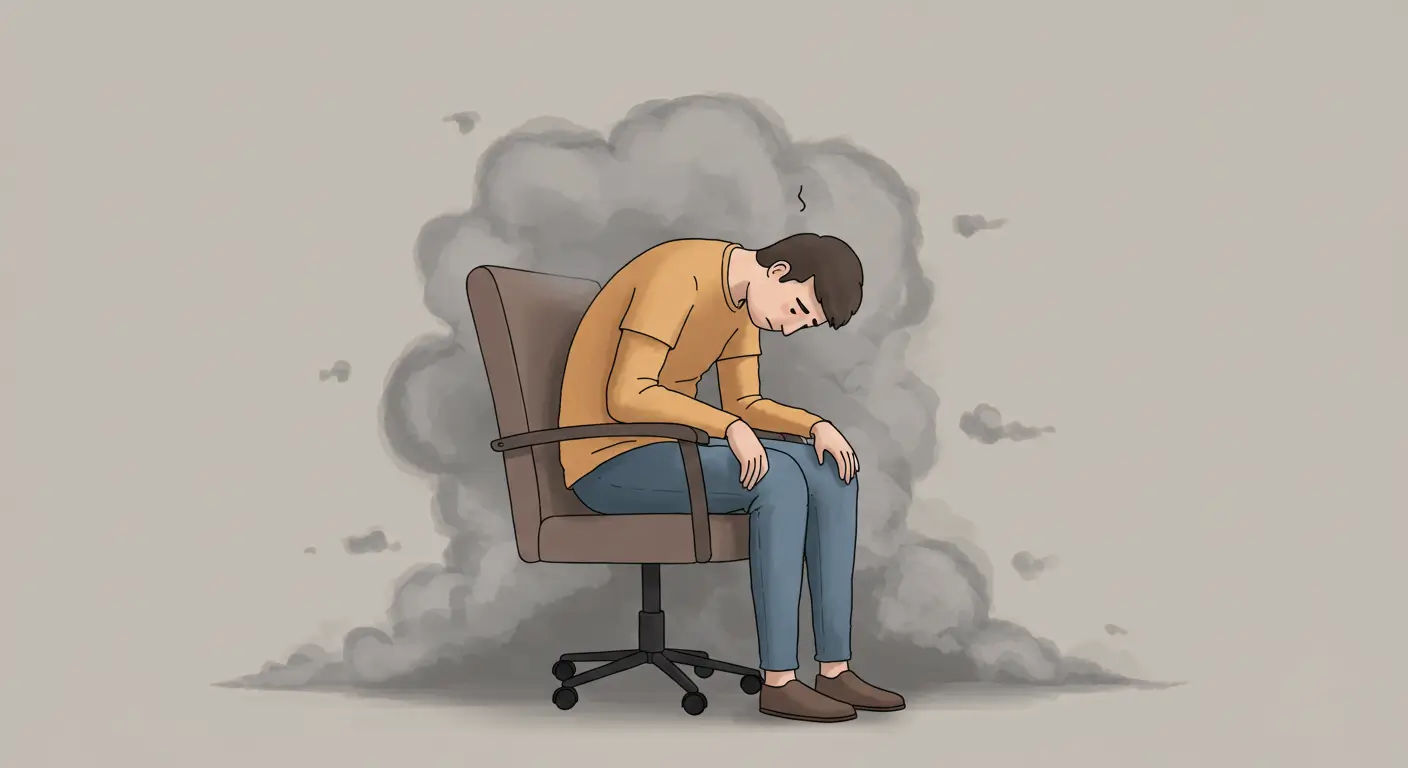You’ve mapped out your ambitions. You know exactly what you want. Yet, moving forward feels like wading through quicksand. Sound familiar? This paradox—where clarity meets inertia—is more common than you think. Research from BetterUp reveals that 75% of people experience periods of low drive, even when their objectives are well-defined.
External pressures—like workplace demands or shifting priorities—often cloud focus. But internal factors play an equally critical role. Childhood influences, such as parental expectations or reward-based systems, can shape how we approach tasks as adults. Medical News Today highlights that these early patterns may explain why some strategies stop working over time.
The good news? Reconnecting with your drive isn’t about sheer willpower. It’s about understanding the interplay between mental health, environment, and ingrained habits. This article offers a step-by-step guide to rebuild momentum—whether you’re navigating career hurdles or personal growth.
Key Takeaways
- Clear goals don’t guarantee consistent drive—external and internal factors often collide.
- Workplace stress and outdated reward systems can sabotage progress.
- Childhood influences may silently steer your current motivational patterns.
- Actionable strategies blend psychological insights with practical steps.
- Mental health and environment are pivotal in sustaining long-term ambition.
Discovering the Impact of Low Motivation on Your Life
When drive diminishes, even simple tasks feel like climbing Everest. Missed deadlines at work or neglected hobbies at home often signal deeper challenges. Medical News Today reports that 68% of adults experiencing low energy levels also struggle with focus—a cycle that erodes both productivity and life satisfaction.

How Motivation Shapes Personal and Professional Success
Daily responsibilities—like answering emails or meal prepping—become overwhelming without sustained drive. Chronic stress amplifies this effect. A project manager might delay reports, while a parent postpones family outings. These patterns create ripple effects: strained relationships, stalled promotions, and diminished self-trust.
The Role of Mental and Physical Health
Fatigue isn’t just physical. Mental exhaustion from unresolved health issues—like anxiety or poor sleep—drains cognitive resources. Research shows restoring energy through consistent sleep schedules improves task completion rates by 41%.
Three ways to assess your current state:
- Track how much time routine activities require versus actual effort
- Note recurring physical symptoms (headaches, restlessness)
- Identify tasks repeatedly postponed despite their importance
Small adjustments—like breaking projects into 20-minute segments—rebuild momentum. Remember: Understanding your why transforms obligation into purpose.
Understanding the Science Behind Motivation
Why do some people tackle challenges with gusto while others stall? The answer lies in how our brains process rewards. Neuroscience reveals two distinct drivers: intrinsic motivation (internal satisfaction) and extrinsic motivation (external rewards).

Intrinsic versus Extrinsic Motivation
Intrinsic motivation thrives on personal joy—like painting for creative fulfillment. Extrinsic motivation relies on outside validation, such as bonuses or praise. A 2022 Nature Human Behaviour study found intrinsic drives activate the prefrontal cortex, linking effort to long-term purpose. External rewards trigger short-lived dopamine spikes—great for immediate tasks, but less sustainable.
| Type | Source | Neurochemical Response | Example |
|---|---|---|---|
| Intrinsic | Internal values | Sustained serotonin release | Learning guitar for self-expression |
| Extrinsic | External rewards | Temporary dopamine surge | Working overtime for a promotion |
The Effects of Brain Chemistry and Reward Systems
Dopamine—the “wanting” chemical—fuels our pursuit of goals. However, repeated exposure to extrinsic rewards can dull its impact. Stanford researchers discovered that energy levels drop when tasks feel transactional. For instance, employees focused solely on salaries often report higher burnout rates.
Habits shape these responses. Daily things like scrolling social media rewire neural pathways, prioritizing quick hits over meaningful effort. Conversely, aligning activities with core values strengthens intrinsic networks. One technique? Pair mundane tasks with personal meaning—like framing exercise as “health investment” rather than obligation.
Understanding this science empowers people to design life strategies that work with their biology—not against it.
Recognizing Common Triggers That Lead to a Lack of Motivation
Modern life bombards us with invisible forces that drain drive. From relentless notifications to unrealistic workplace demands, these triggers often operate beneath conscious awareness—until progress stalls.

External Pressures and Social Media Influences
Scrolling through curated success stories can distort reality. A 2023 Journal of Behavioral Science study found 62% of adults feel inadequate after 30 minutes on social platforms. Constant comparison shifts focus from personal growth to chasing validation—a recipe for eroded mood and productivity.
Workplace dynamics compound this issue. “Employees juggling urgent requests and long hours often neglect care routines,” notes Dr. Elena Torres, a clinical psychologist. This creates a cycle: skipped meals lead to low energy, which fuels procrastination.
Overwhelm and Burnout at Work
Chronic stress reshapes brain chemistry. The table below highlights how external and internal triggers interact:
| Trigger Type | Example | Impact | Solution |
|---|---|---|---|
| External | 24/7 email access | Reduces focus by 37% (Mayo Clinic) | Set tech-free hours |
| Internal | Self-critical thoughts | Lowers task completion rates | Practice daily affirmations |
Burnout often starts subtly—a missed lunch break here, extra weekend work there. Over time, these choices become part of a harmful routine. Recognizing patterns is the first step to seeking help or restructuring priorities.
Ask yourself: Does my environment fuel growth or fatigue? Small tweaks—like muting non-urgent alerts—rebuild mental reserves for what truly matters.
Exploring Personal Barriers and Identifying Hidden Issues
Hidden obstacles often derail progress before external challenges even appear. The thoughts whispering “you’re not ready” or “this won’t work” create invisible roadblocks. A 2023 Psychological Review study found that 58% of adults struggle with self-imposed limitations rooted in past experiences.
Self-Doubt and Negative Self-Talk
Internal criticism acts like a broken record—repeating doubts until they feel true. Phrases like “I’ll fail anyway” drain energy and shrink ambition. Cognitive behavioral therapists recommend flipping these thoughts into empowering questions: “What evidence supports this belief?” or “How would I advise a friend?”
Unclear Goals and Overcommitment
A jam-packed to-do list often hides fuzzy priorities. Trying to master Spanish, launch a side hustle, and train for a marathon simultaneously? This scattergun approach splits focus. Stanford researchers found that narrowing goals to 1-2 key objectives triples follow-through rates.
Three signs your ambitions need refining:
- Tasks feel disconnected from core values
- Daily progress is hard to measure
- Exhaustion outweighs accomplishment
Transform obligations into rewards by linking small wins to meaningful outcomes. Finished a project phase? Celebrate with a nature walk—a tangible reminder that effort breeds joy. As Dr. Rachel Kim notes: “Clarity isn’t about doing more—it’s about doing what aligns.”
Addressing the Lack of Motivation Head-On
Breaking through stagnation starts with confronting what holds you back. Personal barriers—both visible and hidden—shape how you approach goals. A 2023 Behavioral Science & Policy study found that individuals who identify their unique obstacles are 73% more likely to sustain progress.
Understanding Your Unique Barriers
Start by asking: What makes tasks feel like burdens instead of opportunities? External factors like social media comparisons often distort reality. One experiment showed users spent 22% less time on productive tasks after scrolling idealized feeds.
Three steps to pinpoint challenges:
- Track daily energy dips—when do you feel like quitting?
- Audit screen time: Does social media drain focus during work hours?
- Label emotions honestly during tasks you’re working to complete
Momentum builds through action. A project manager struggling with reports started writing for 10-minute intervals. “Once I began, I realized the anticipation was worse than the task,” she shared. Small wins create proof you can keep going.
Reframe setbacks as data. Journaling helps uncover patterns: Are you working toward someone else’s expectations? Clarity emerges when you separate internal desires from external noise. Remember—every step forward reinforces your ability to keep going, even when progress feels slow.
Actionable Strategies to Beat Low Motivation
Reviving your drive requires more than wishful thinking—it demands smart systems. Research shows pairing structured plans with personalized incentives boosts follow-through by 63%. Let’s explore how to turn stalled goals into consistent progress.
Step-by-Step Methods for Daily Tasks
Start by shrinking overwhelming tasks. Break a lengthy report into 25-minute Pomodoro sessions. After each interval, check one item off your list. This way, you build momentum without burnout.
Time-blocking helps too. Schedule high-priority work during peak energy hours. A graphic designer might tackle complex projects before noon, reserving afternoons for emails. Align these blocks with long-term goals—like dedicating Fridays to skill-building courses.
Incorporating Positive Rewards and Incentives
Celebrate micro-wins to reinforce progress. Finished a presentation draft? Take a walk or enjoy a favorite podcast episode. A 2023 Journal of Applied Psychology study found tailored rewards increase task adherence by 48%.
Pair incentives with values for deeper impact. For example:
| Task | Reward | Alignment |
|---|---|---|
| Complete weekly budget review | Family game night | Strengthens relationships |
| Finish client proposal | Art class enrollment | Fuels creativity |
Manage stress by setting “good enough” standards. Perfectionism often paralyzes—aim for progress, not flawlessness. Experiment with strategies until you find your optimal way forward. As productivity coach Mark Ruiz advises: “Systems outlast sheer effort every time.”
Creating a Healthy Mindset Through Self-Care and Self-Compassion
Cultivating a resilient mind starts with treating yourself like someone worth caring for. A 2023 Harvard study found that consistent self-care reduces anxiety symptoms by 34% and enhances focus. Simple acts—like morning meditation or evening journaling—rebuild mental stamina for life’s demands.
Mindfulness, Meditation, and Positive Affirmations
Start with five-minute breathing exercises. Inhale for four counts, hold for seven, exhale for eight. This technique activates the parasympathetic nervous system—lowering stress hormones by 27%, per Johns Hopkins research.
Positive affirmations rewire thought patterns. Try these daily statements:
- “I am capable of growth, even in small steps.”
- “My worth isn’t tied to productivity.”
- “Rest is part of progress.”
Pair these tips with tangible rewards. Finished a challenging task? Enjoy a herbal tea or call a friend. These micro-celebrations reinforce neural pathways linking effort to joy.
Consistency matters more than duration. A 2022 Clinical Psychology Review analysis showed that 10 minutes of daily meditation improves emotional regulation as effectively as longer sessions. Goal-setting becomes sustainable when framed as self-respect—not punishment.
“Self-compassion isn’t indulgence—it’s the foundation of lasting change.”
Track progress with a simple checklist. Celebrate three weekly wins—no matter how minor. Over time, this practice shifts your mind from scarcity to abundance thinking. Remember: Small steps compound into transformative habits.
Time Management Tips and Organizational Techniques
Effective time management acts as a bridge between intention and achievement. Studies show organized individuals experience 52% lower stress levels compared to those with chaotic schedules. Start by viewing your day as interconnected puzzle pieces—each task fitting into a larger picture of progress.
Breaking Tasks into Manageable Segments
Overwhelm often stems from viewing projects as monolithic obligations. Split complex goals into 30-minute action bites. For example:
- Write one email draft before checking messages
- Design three presentation slides during a coffee break
- Review budget spreadsheets for 25-minute intervals
Prioritize sleep consistency—going to bed within the same 90-minute window nightly stabilizes circadian rhythms. This practice boosts next-day focus by 29%, according to UC Berkeley research.
| Planning Method | Daily Benefit | Tools |
|---|---|---|
| Time-Blocking | Reduces multitasking fatigue | Google Calendar, Todoist |
| Eisenhower Matrix | Clarifies urgent vs. important | Trello, Notion |
Incorporate a 15-minute walk after completing three tasks. Movement oxygenates the body and resets mental clarity. University of Pennsylvania researchers found this habit decreases feelings of depression by 18% over eight weeks.
Balance demands by scheduling “recharge slots”—blocks for meals, stretching, or quiet reflection. As productivity expert Laura Vanderkam notes: “Protecting downtime isn’t selfish—it’s how you sustain high performance.” Small tweaks create ripple effects: clearer priorities, renewed focus, and lasting momentum.
Boosting Your Energy Levels to Enhance Motivation
Energy fuels every step toward your goals—but how do you keep the tank full? Sustainable drive thrives when physical vitality meets mental clarity. Let’s explore science-backed methods to elevate your levels and conquer daily challenges with renewed vigor.
Building Healthy Habits Through Exercise and Nutrition
Movement isn’t just about fitness—it’s a catalyst for mental sharpness. A University of Georgia study found 20 minutes of daily walking boosts cognitive function by 18%. Pair exercise with friends to amplify accountability: join a weekend hiking group or sign up for dance classes together.
Nutrition plays an equally vital role. Swap processed snacks for protein-rich alternatives like almonds or Greek yogurt. Three simple upgrades:
- Start mornings with a spinach-berry smoothie (rich in antioxidants)
- Hydrate with lemon water instead of sugary drinks
- Schedule meals every 3-4 hours to stabilize blood sugar
Improving Sleep and Reducing Stress
Quality sleep resets both body and mind. Adults averaging 7-8 hours nightly report 32% higher task completion rates. Create a wind-down routine: read fiction instead of scrolling, or practice 4-7-8 breathing exercises.
| Sleep Habit | Benefit | Tip |
|---|---|---|
| Consistent bedtime | Enhances REM cycles | Set phone reminders |
| Cool room temperature | Promotes deeper rest | Use breathable sheets |
Combat stress through micro-resets. Take five-minute walks between meetings or call friends during breaks. These pauses rebuild your sense of control—a key factor in tackling ambitious challenges.
Remember: Small, consistent changes create compounding benefits. As nutritionist Dr. Lisa Park emphasizes: “Energy isn’t finite—it’s renewable through intentional habits.” Pair physical care with social connection to sustain both levels and purpose.
Conclusion
Navigating life’s demands requires both a compass and a toolkit. This exploration reveals how anxiety, social media influences, and even diet shape our ability to stay driven. True progress comes from balancing self-awareness with practical steps—like time-blocking work tasks or prioritizing nutrient-rich meals.
Key strategies stand out: address internal barriers through mindfulness, design environments that match your energy levels, and lean on others when challenges arise. As highlighted in research on executive function skills, small habit shifts—like breaking projects into steps—build lasting momentum.
View setbacks as course corrections, not failures. Did a hectic week derail your workout plan? Adjust your schedule—don’t abandon the goal. Every choice is a chance to refine your approach.
Start today: pick one strategy from this guide. Whether it’s a 10-minute meditation or swapping processed snacks for whole foods, action sparks transformation. You’ve got the insights—now trust your capacity to grow. Progress isn’t about perfection. It’s about persistence.
FAQ
How does low motivation affect mental and physical health?
Chronic low motivation disrupts energy levels, increases stress, and weakens the immune system. It often correlates with poor sleep quality, reduced physical activity, and neglect of nutrition—all of which worsen anxiety or depression symptoms.
Why do social media platforms like Instagram drain motivation?
Constant exposure to curated success stories on TikTok or LinkedIn fuels comparison, creating unrealistic benchmarks. This triggers self-doubt and overwhelms the brain’s reward system—reducing satisfaction in personal progress.
What’s the difference between intrinsic and extrinsic motivation?
Intrinsic motivation comes from internal rewards—like personal growth—while extrinsic relies on external validation, such as promotions. Brain chemistry studies show intrinsic drives activate dopamine pathways more sustainably than temporary external incentives.
How can breaking tasks into smaller steps help with burnout?
Dividing projects into 15-minute segments reduces overwhelm by focusing the mind on achievable “micro-wins.” Apps like Todoist use this method to build momentum, combat procrastination, and preserve mental bandwidth for complex work.
Can improving sleep quality boost motivation levels?
Yes. Research by the National Sleep Foundation links 7–9 hours of sleep to better focus, emotional regulation, and decision-making. Poor sleep disrupts cortisol balance, increasing fatigue and undermining goal-setting efforts.
How do negative self-talk patterns sabotage progress?
Phrases like “I’ll never finish this” activate the amygdala’s stress response, flooding the body with cortisol. Cognitive-behavioral techniques—such as reframing thoughts with affirmations—help rewire neural pathways for resilience.
What role does diet play in maintaining energy for tasks?
Foods rich in magnesium (spinach) and omega-3s (walnuts) support neurotransmitter production. Balanced blood sugar from protein-rich snacks stabilizes mood and prevents midday crashes—critical for sustaining work productivity.
Why are rewards ineffective if they’re not personalized?
Generic incentives—like a Starbucks coffee—fail to trigger dopamine release if they don’t align with personal values. Tailored rewards, such as a hike after completing a project, leverage intrinsic joy for lasting motivation.




























































